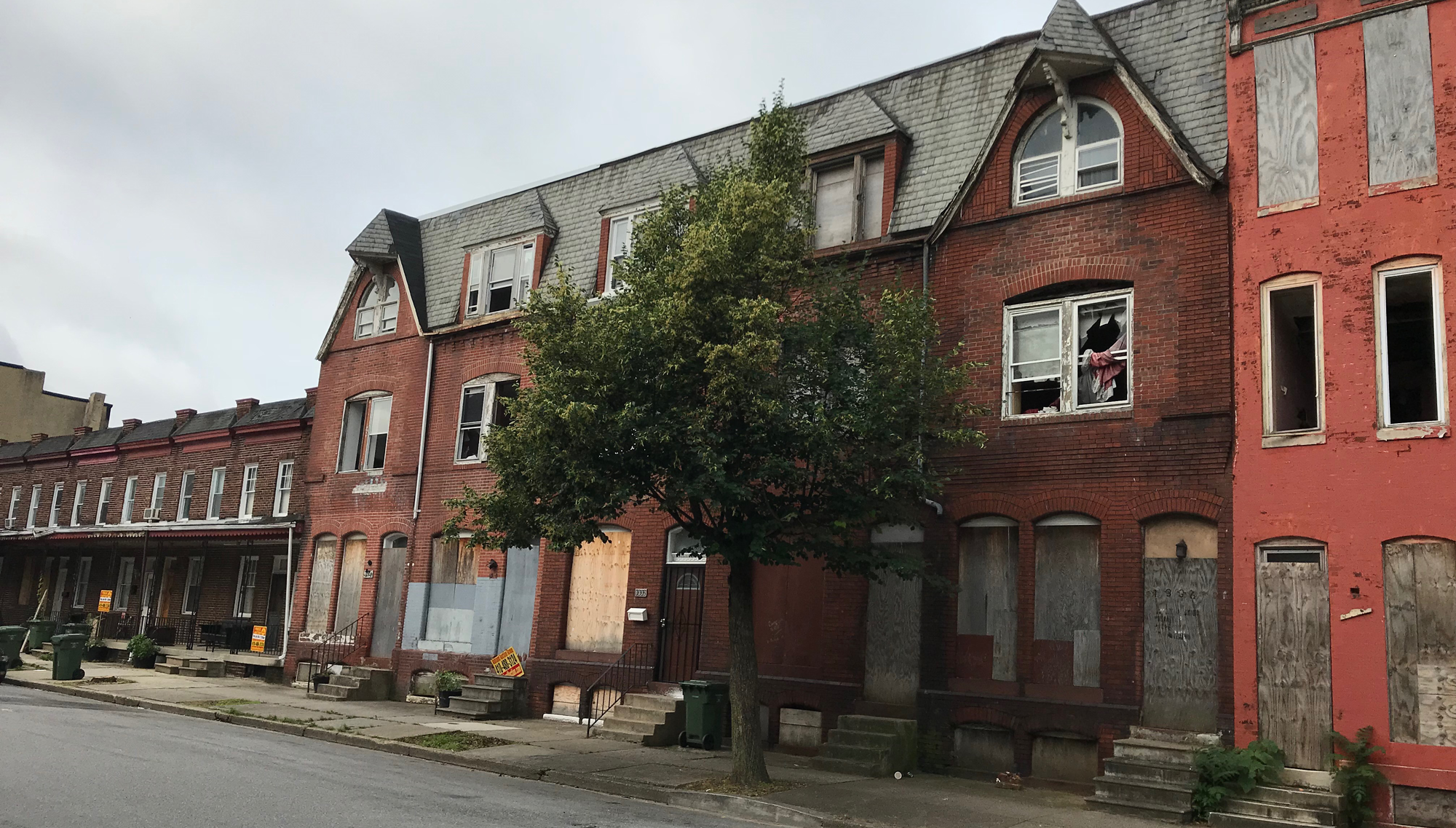
August 31, 2022
By Mary Miller and Mac McComas | Technical assistance from the Baltimore Neighborhood Indicators Alliance
The true cost of disinvestment and decline in the physical attributes of a city is far more than direct spending on maintenance and lost tax revenue, but these are the measurable aspects of vacancy. The broader costs to communities in terms of lost residents, public health impacts, and heightened crime are less measurable but very real. In Baltimore, these costs are also highly inequitable as they are largely borne by majority Black neighborhoods and Black homeowners.
The economic value to the city of solving this problem is vast. Realizing lost tax revenue, removing the contagion effects of vacant houses on surrounding properties, eliminating direct expenditures for maintenance and public safety add up to meaningful figures, before even considering the unmeasurable public health benefits of restored properties and neighborhoods.
Interest in finally tackling Baltimore’s vacant property problems at scale is manifesting itself in a number of different proposals to restore these properties, to meet housing demand, and strengthen the city’s tax base. Our aim is to provide a strong factual backdrop for assessing various proposals and developing policy recommendations.
Our main findings include:
- Baltimore’s vacant properties weigh on the city’s economic and social potential with measurable costs that far exceed the investment needed to bring them back to productive use. These costs are also highly inequitable as they are largely borne by majority Black neighborhoods and Black homeowners.
- The city’s recorded inventory of 15,000 vacant properties is dynamic, with properties entering and leaving vacancy every year, but hovering between 7 and 8% of total city properties. The number of total unoccupied properties is much larger, but includes housing in good condition.
- Baltimore’s housing market has strengthened in the past two years, but still falls well below national benchmarks. The city has the third highest rate of vacant and abandoned properties in the country.
- We estimated at least $100 million in lost revenue annually. The depressed value of vacant properties creates a shortfall of potential property tax revenue of approximately $50 million each year, with an additional $22 million loss attributed to the “contagion effect” on the value of nearby properties. The city could also benefit from at least $24 million in additional income tax revenue and over $12 million in additional water and sewer revenue if 15,000 vacant properties were occupied.
- While the city directly owns only 10% of the vacant property stock today, it’s responsible for nearly all of the expenses related to these properties.
- We identified over $100 million in directly identifiable operating and capital expenses for vacant properties in the 2022 budget, with more expenses embedded in broad agency budgets that can’t be separated out.
- An increase in vacant properties in a neighborhood is associated with additional 911 calls and additional calls for 311 services each year. Similarly, an increase in vacant properties is associated with additional violent crimes and property crimes.
- There are significant public health costs associated with vacant properties such as lead poisoning and poor mental health outcomes. An accurate measure of these costs would increase our estimates significantly.
- The costs of rehabilitation vary widely, depending on property size, location, and condition. The estimated cost to close the gap between rehabilitation costs and sales price is below the annual lost revenue and cost the city is currently incurring.
- Understanding the true costs of vacant properties is only the first step in developing a broader economic plan for increasing residency in the city.
This research was supported with funding from the Abell Foundation and the Robert W. Deutsch Foundation. The primary datasets used in this report are from the University of Baltimore’s Jacob France Institute Baltimore Neighborhood Indicator’s Alliance and Open Baltimore.

